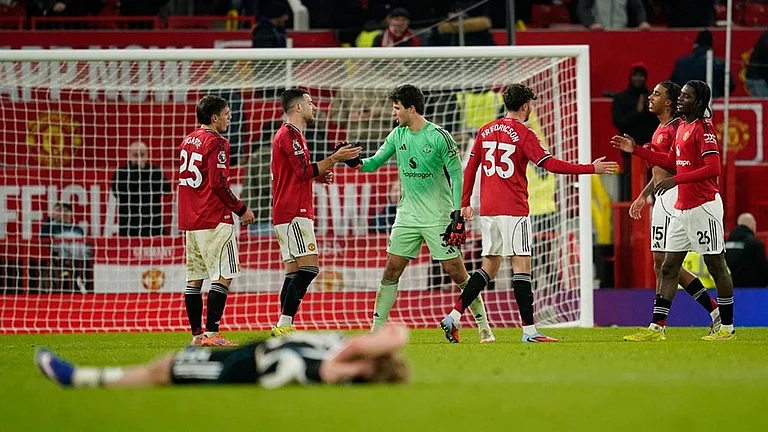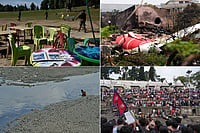Cinema is the reflection of our society and has evolved with the changing social and political mores. Since the very beginning, it has been a medium that filters reality around us. Along with other issues, prominent incidents of atrocities throughout the world have been captured in numerous movies and documentaries which can help us understand the politics and philosophy behind them. These films make us feel the depths of the trauma experienced by the victims of atrocities.
The inhumanity of the Nazi Germany, for instance, has been documented well in films. Roman Polanski’s The Pianist (2002) is the story of a polish Jew, a classical musician, who survives the German Holocaust by hiding in Warsaw, near its detention camps. Although the pianist somehow survived, it’s a lost battle as his loved ones died in the German atrocities, mostly dumped in the gas chambers of detention camps. Another brilliant piece of work on Nazi atrocities is the Italian comedy drama, Roberto Benigni’s Life is Beautiful (La vita è bella, 1997), which depicts how peacefully the German-Jewish people were living in Italy before the Fascist atrocities on Jewish people began. Benigni has set the stage for a love story between a German woman and a Jewish book shop owner and their son. Later, the movie unfolds the love between a father and son; even while living in a hostile setting, bounded by Nazi concentration camps, the father uses humour and jokes in order to conceal the grim realities of the war and the detention camp from his son.
Innocence during childhood knows no identity, no religion, no caste, no country and no ethnicity. It is something inherent among all children; a child needs another child to play with irrespective of his/her religious identity. In Mark Herman’s The Boy in the Striped Pajamas (2008), which depicts the Nazi atrocities and the horrible scenes of gas chambers, a German Commandant loses his own 8-year-old son while commanding the detention camps in the surrounding area. After his son does not get to meet any child to play within the vicinity, he explores the surroundings of his house. He stumbles upon a Jewish kid of the same age in the detention camp and becomes best friends with him. While playing, he unknowingly enters the gas chamber with the Jewish kid and dies. The climax is so poignant that it can hit you hard.
Khalid Mohamed’s Fiza (2002) depicts how Muslim families were targeted during the Bombay riots. A sister, wondering about her younger brother lost during the riots, embarks on a search to find him. Rahul Dholakia’s 2007 film, Parzania, based on Gujarat riots, depicts how people live cordially with each other, keeping aside their faiths, but the riots create fissures among them. After a Parsi couple loses their son during the riots, the father makes several rounds of government offices, looking for him. Amu, Shonali Bose’s 2005 film on anti-Sikh riots, depicts the story of a girl who lost her parents in the riots and remains unaware of this fact till her 20s. After she gets to know about this, she starts searching for their belongings. Muzaffarnagar Baaqi Hai, a 2015 documentary by Nakul Singh Sawhney on the 2013 Muzaffarnagar riots, is a brave work that showcases the riots between Hindus and Muslims over a doctored video. The movie has also captured the life in the camps for the displaced people. Sanjiv Jaiswal’s 2012 film, Shudra: The Rising, speaks about the atrocities on Dalit community and how they rise against it. Further, T. J. Gnanavel’s 2021 film Jai Bhim shows how Dalits continue to struggle to get justice for the crimes done against them.
Shikara was a moderate or balanced movie centred on the atrocities on Kashmiri Pandits during the mass exodus. It does not put the blame on any religious community or group. On the contrary, Vivek Agnihotri’s The Kashmir Files on the same subject betrays an attempt to politicise cinema. It is biased towards a particular religion and can trigger violence and polarisation. Cinema is a great tool to put the spotlight on social issues and initiate conversations around them, but Agnihotri has failed to project it in an objective manner.
There are many other movies that delve into such violence that are often orchestrated for the political motive of a handful of people to gain power. On the other hand, it’s the innocent people who become the victims. That takes us to the question of the objective of power. Comedian Charlie Chaplin once said, “You need power, only when you want to do something harmful otherwise love is enough to get everything done.”
Different Shades Of Atrocities
According to US political scientist Paul Brass, India has experienced a considerable range of such forms — from riots, pogroms, police killings and massacres to retributive genocide. Then, there are insurrectionary movements based on tribal, ethnic, religious, and regional identities. Further, there is agrarian-based class warfare, in which the Maoists and other militant groups are termed ‘Naxalite’ by the authorities and most commentators. Finally, there is state violence, including state terrorism, to counter several of the above forms.
There has always been a political milieu to such violence and there are political profits consequent to them. One thing which is common to all these movies is the ‘anger in the name of identity’. Is it identity that decides someone’s destiny in this world? The question is not who killed whom or which religion, caste or ethnic group was right or wrong. The question is: why such violence in the name of identity? Where is such violence born? This is, however, not something exclusive to India; we can see identity-based violence across the globe.
The Politicisation Of Identity
What is identity? When a child is born, he/she doesn’t possess any identity. He/she is born just like any other living creature. We impose numerous identities on the child after birth. In films like The Jungle Book and Tarzan, the child adapts all the qualities and tactics of an animal and that simply proves that the grooming and socialisation of a child decide his/her temperament towards fellow beings and society and all other aspects of his/her life. The term “identity politics” is a broad term and encompasses a range of issues. It often leads to justice to one group at the expense of another group. It clutches the belief system and extracts maximum output from that. It primarily looks forward for the political space of the particular community that happens to be the marginalised community in that constituency. Whereas, in the wider context, the term ‘identity politics’ addresses discourses attached to civil rights, women’s movement, multiculturalism, ethnic conflicts and LGBTQI activism. But the point is that there are only certain identities that get politicised. By nature, man is considered humane and cordial. But the animal side of humans as portrayed in films on atrocities reminds us of Lord Acton’s oft-quoted statement that “absolute power corrupts absolutely” and also of Mao Zedong’s proposition that “political power grows out of the barrel of a gun”.
Law Grinds The Poor
Through numerous judgments, it has been seen that in Indian democracy, laws are only made to punish the poor, the fragile and the submissive. However, it takes the form of decorative platters that are served to the rich and the elite by the courts themselves. Anglo-Irish novelist Oliver Goldsmith said that the laws grind the poor, and the rich man rules the law. The rat race for money and power makes the decision-makers blind to the plight of the poor. Polarisation is whipped up to capture the vote bank. Andrew Heywood says: “Politics is all about co-operation and conflict; if you cannot co-operate, then there is conflict to plunder you.”
Anarchy And Non-Moral
The question arises: What have we gained as humans? While we have stepped on Moon and Mars, and developed nuclear weapons, we have not been able to control atrocities against some sections of the human race? To understand this, let’s look at three prominent theories in political science. According to ‘Realism’, world politics is an anarchic situation and, therefore, we shall safeguard our national interest. The second is the ‘Thomas Hobbes State of Nature,’ which argues: “The state of nature is a war of every man against every man in which the life of man is ‘solitary, poor, nasty, brutish and short’”. In this state, there can be no morality, justice, industry, and civilisation. In this state, however, there is a right: of nature, the natural right of every man to everything, even to one another’s life. Further, we can ask whether modernisation has made us moral. In 1750, Jean Jacques Rousseau attacked Enlightenment thus: “Has the progress of science and arts contributed to corrupt or purify morality? Rousseau argued that science was not saving but bringing moral ruin upon us. Progress was an illusion. What appeared to be advancement was in reality regression. The arts of civilised society served only “cast garlands of flowers over the chains men bore”. The development of modern civilisation had not made men either happier or more virtuous. Virtue was possible in a simple society, where men lived austere, frugal lives. In the modern sophisticated society, man was corrupted, and greater the sophistication, the greater the corruption.
The Un-Happiness of Others
The atrocities on the minority and the fragile communities follow English philosopher Jeremy Bentham’s concept of Utilitarianism: “Maximum happiness for the maximum number of people.” It means that there is nothing wrong in killing ‘others sans maximum’ for the happiness of the maximum number of people. Therefore, the powerful rules, and the weak and the fragile dies. At the same time, we speak of proletariat revolution, a Communist revolution. But that has been proved wrong after the disintegration of the USSR. With the deeply ingrained caste system in India, we can never see a revolution as the marginalised section is dispersed; they do not want to get united under a single organisation and fight for their right. With time, only the ‘fittest’ will survive; all others are only doomed to perish.
Renu Singh is an Assistant Professor of Political Science at Amity Institute of Liberal Arts, Lucknow





















